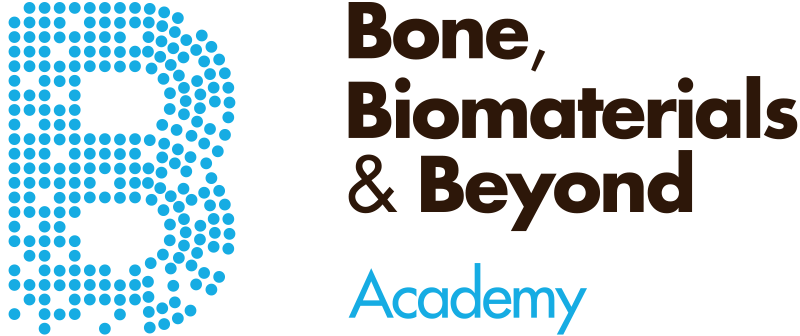International Journal of Periodontics & Restorative Dentistry, Pre-Print
DOI: 10.11607/prd.7660, PubMed-ID: 40215417April 11, 2025,Seiten: 1-17, Sprache: EnglischSolderer, Alex / Liu, Chun Ching / Schmidlin, Patrick R.Background: This case highlights a novel approach to managing a failing implant in the maxillary posterior region, emphasizing the simultaneous approach of implant removal, immediate implant placement and bone reconstruction by guided bone regeneration (GBR). Case Presentation: A 39-year-old male presented with a failing implant at position #15 due to peri-implantitis, characterized by bleeding on probing, suppuration, and inflammation, with probing pocket depths (PPD) of up to 9 mm. Radiographic assessment revealed significant periimplant bone loss, with only 4 mm of residual osseointegration. Pre-surgical 3D planning ensured precise implant positioning, avoiding sinus perforation and optimizing stability. During surgery, the failing implant was removed using minimally traumatic techniques, and a new tissue-level implant was immediately placed, achieving a primary stability torque of 27 Ncm. The circumferential bone defect was treated with deproteinized bovine bone mineral combined with hyaluronic acid and covered with a resorbable collagen membrane to initiate bone reconstruction. The implant site was submerged, and healing was uneventful. Three months post- surgery, the implant was uncovered, and a screw-retained monolithic zirconia crown was placed, restoring masticatory function and esthetics. At the 12-months follow-up appointment the patient presented a healthy implant site and no remaining bone defect. Conclusions: The approach achieved successful osseointegration, significant clinical and radiographic improvements and stability after 12 months. The approach achieved successful osseointegration, significant clinical and radiographic improvements and stability after 12 months. This case highlights the potential of a protocol achieving immediate resolution of peri-implantitis by the use of a new sterile implant.
Schlagwörter: implants, explantation, removal, reimplantation, guided bone regeneration, periimplantitis
QZ - Quintessenz Zahntechnik, 6/2025
WissenschaftSeiten: 680-688, Sprache: DeutschEsmail, Iman / Gmeiner, Julia / Meinen, John / Stimmelmayr, Michael / Edelhoff, Daniel / Schmidlin, Patrick R. / Stawarczyk, BognaDie dentale Implantologie hat sich in der Vergangenheit kontinuierlich weiterentwickelt. Zahlreiche Innovationen in Bezug auf Materialien, Implantatdesign, klinische Protokolle sowie prothetische Schnittstellen wurden interdisziplinär vorangetrieben. Gerade mit der Einführung zweiteiliger Zirkonoxid-basierter Implantatsysteme sind neue Befestigungsmöglichkeiten entstanden. Da bislang klinische Langzeitstudien für deren erfolgreichen Einsatz noch spärlich sind, bleibt dieser Forschungs- und Entwicklungszweig besonders relevant. Ziel der vorgelegten Übersicht ist, auf die materialkundlichen Fortschritte von Zirkonoxid als Implantatwerkstoff, die Besonderheit zweiteiliger Zirkonoxidimplantate sowie das Befestigen von Zirkonoxid-Versorgungen einzugehen.
Schlagwörter: Implantologie, Zirkonoxid, Glasfaserabutment, Interface, Implantatkrone, Befestigung
Oral Health and Preventive Dentistry, 1/2025
Open Access Online OnlyOral HealthDOI: 10.3290/j.ohpd.c_1955April 15, 2025,Seiten: 217-224, Sprache: EnglischMarconi, Chiara / Gubler, Andrea / Wegehaupt, Florian J. / Schmidlin, Patrick R.Purpose: To investigate the approximal abrasive enamel and dentine wear using interdental brushes (IDBs) with and without toothpaste in a novel standardised in-vitro set-up. Materials and Methods: Seventy-two bovine enamel and 72 dentine specimens were prepared and randomly allocated into 12 groups (odd group: dentine; even group: enamel). The specimens were brushed with three IDB types of ISO 2 (Curaprox (CPS09, groups 1–4), Elmex (size 2, groups 5–8) and Circum (Circum 2, groups 9–12)) with artificial saliva or toothpaste slurry (Colgate Total Original). A custom-made brushing device simulated interdental brushing for 1 h on dentine (7,200 strokes) and 6 h on enamel (43,200 strokes). Wear was assessed using a contact profilometer, and electron microscopy images were taken. Kruskal–Wallis and Mann–Whitney tests were used for statistical analysis. Results: The combination of IDBs with artificial saliva resulted in enamel and dentine wear below the detection limit, similar to the enamel wear when toothpaste was used. Dentine specimens showed significant abrasive wear, which was influenced by the IDBs’ design as follows: Curaprox (median ± interquartile range (IQR): 8.6 ± 1.0 µm), Circum (9.7 ± 2.9 µm), and Elmex (18.8 ± 9.1 µm). The difference in wear between Curaprox and Circum was not statistically significant (P = 1). However, the increase in the wear of Elmex compared with that of the other IDBs was significant (P 0 0.001). Conclusion: The use of IDBs with toothpaste may cause statistically significant dentine wear and should not be recommended in combination. Appropriate instructions are essential.
Schlagwörter: abrasion, enamel, dentine, interdental brush substance loss
Oral Health and Preventive Dentistry, 1/2023
Open Access Online OnlyPeriodontologyDOI: 10.3290/j.ohpd.b4100941, PubMed-ID: 37195333Mai 17, 2023,Seiten: 171-178, Sprache: EnglischFrey, Adrian Christian / Gubler, Andrea / Schmidlin, Patrick R. / Wegehaupt, Florian J.Purpose: To assess the root surface roughness and substance loss induced by chemical and chemomechanical challenges on root surfaces pretreated with ultrasonic instrumentation, a hand scaler, or erythritol airflow.
Materials and Methods: One hundred twenty (120) bovine dentin specimens were used in this study. Specimens were divided into eight groups and treated as follows: groups 1 and 2: polished with 2000- and 4000-grit carborundum papers but not instrumented (‘untreated’); groups 3 and 4: hand scaler; groups 5 and 6: ultrasonic instrumentation; groups 7 and 8: erythritol airflow. Samples from groups 1, 3, 5, and 7 then underwent a chemical challenge (5 x 2 min HCl [pH 2.7]), whereas samples from groups 2, 4, 6, and 8 were subjected to a chemomechanical challenge (5 x 2 min HCl [pH 2.7] + 2 min brushing). Surface roughness and substance loss were measured profilometrically.
Results: The least substance loss through chemomechanical challenge was noted after erythritol airflow treatment (4.65 ± 0.93 µm), followed by ultrasonic instrumentation (7.30 ± 1.42 µm) and the hand scaler (8.30 ± 1.38 µm); the last two (hand scaler and ultrasonic tip) did not differ statistically significantly. The highest roughness after chemomechanical challenge was observed on ultrasonically treated specimens (1.25 ± 0.85 µm), followed by hand-scaled specimens (0.24 ± 0.16 µm) and those subject to erythritol airflow (0.18 ± 0.09 µm); there was no statistically signficant difference between the latter two, but they both differed statistically significantly from the ultrasonically treated specimens. No statistically significant difference in substance loss through the chemical challenge was observed between specimens pretreated by the hand scaler (0.75 ± 0.15 µm), ultrasonic tip (0.65 ± 0.15 µm), and erythritol airflow (0.75 ± 0.15 µm). The chemical challenge smoothed the surfaces treated with the hand scaler, ultrasonic tip, and erythritol airflow.
Conclusion: Dentin pretreatment with erythritol powder airflow resulted in a higher resistance to chemomechanical challenge than did dentin treated ultrasonically or with the hand scaler.
Schlagwörter: erythritol airflow, hand scaler, ultrasonic, substance loss, surface roughness
Quintessence International, 9/2022
DOI: 10.3290/j.qi.b2841913, PubMed-ID: 36112020Seiten: 808-814, Sprache: EnglischSolderer, Alex / Schmidlin, Patrick R.Objective: Chlorhexidine is the gold standard for chemical biofilm control in dentistry. As with all therapeutic agents, side effects should be considered, which may include allergic reactions. The present review focused on the allergy-causing potential of dental CHX mouthrinses.
Method and materials: Four databases were searched for systematic reviews related to chlorhexidine and dentistry (MEDLINE, Embase, Web of Science, and Scopus). Original papers available in the identified studies and meta-analyses were individually screened for allergy by both authors.
Results: An initial 804 studies were identified, of which 46 systematic reviews and the original papers described therein were ultimately analyzed. Only two reviews explicitly addressed the topic of allergy. In a total of 194 original studies and a total of 9,698 patients, no allergies were reported. In 44 control studies, the topic was touched upon, but only in connection with the inclusion and exclusion criteria and possible contraindications.
Conclusions: The topic of “allergy” regarding chlorhexidine application as a mouth rinse in dentistry seems to be omnipresent. Nevertheless, true allergies to chlorhexidine in dentistry appear to be low to nonexistent. Precautions, however, should still be taken in practice and further studies should be envisaged, especially in patients with an alleged history of chlorhexidine contact allergy. (Quintessence Int 2022;53:808–814; doi: 10.3290/j.qi.b2841913 based on an original publication (in German) in Parodontologie 2022;33(1):59–69)
Schlagwörter: allergy, chlorhexidine, mouthrinse, review
DZZ International, 4/2022
Open Access Online OnlyCase ReportDOI: 10.53180/dzz-int.2022.0014Seiten: 118, Sprache: EnglischAttin, Thomas / Schmidlin, Patrick R. / Tauböck, Tobias T.Introduction: The restorative reconstruction of lost tooth structure and the restoration of the original vertical bite position in a dentition that has been severely affected by tooth erosion or abrasion always presents the dentist with problems in implementing the therapy. Traditionally, this therapy is carried out with laboratory-produced restaurations, which usually require preparation of the remaining tooth substance and result in high costs for the patient, so that alternative procedures should be considered. It should be emphasized that any restorative work, even minimally invasive, is only indicated in these patients if the preventive approach of inhibiting further loss of tooth structure is successful at the same time.
Treatment method: The following article presents a case study on the use of direct adhesive composite restorations as a possibility for reconstructing an erosively severely altered dentition. Transfer splints, which are fabricated on the basis of individual wax-up models, are used to reconstruct the occlusal surfaces.
Conclusion: The procedure described is a well-studied and proven method for restoring teeth with erosion-induced tooth wear. As with all new procedures, there will be a certain learning curve for the practicing dentist, after which high-quality restorations can be implemented using this technique.
Schlagwörter: adhesive technique, composite, erosion, occlusal vertical dimension, tooth wear
Parodontologie, 4/2022
Seiten: 411-422, Sprache: DeutschSchmidlin, Patrick R. / Fischer, Kai R.„Failed augmentation“, „GBR-itis“, „Periaugmentose“ oder was steckt dahinter?Dentale Implantate sind heute ein Standard für die Versorgung teilbezahnter Patienten. Oft muss allerdings – vor allem auch bei vorausgegangenem Attachmentvelust nach Parodontitis oder Trauma – der fehlende Alveolarknochen rekonstruiert werden. Hier hat sich die gesteuerte Knochenregeneration (GBR) als regeneratives Standardverfahren etabliert und bewährt. In der Langzeitprognose stellen entzündliche periimplantäre Erkrankungen und deren Behandlung allerdings eine nicht seltene Komplikation und Herausforderung dar. Gelegentlich trifft man auch auf nichtentzündlich bedingte Knochenabbaumuster, welche bislang nicht klar definiert wurden. Hier kann zum Beispiel einer klinisch nicht erkennbaren symptomlosen primär fehlgeschlagenen Knochenaugmentation eine entscheidende Rolle zukommen. Dieser eher degenerative Knochenabbau oder − provokant formuliert – diese „Periaugmentose“ soll im vorliegenden Artikel anhand wissenschaftlicher Grundlagen der GBR sowie zweier klinischer Fälle aufgezeigt und diskutiert werden.
Manuskripteingang: 19.07.2022, Annahme: 15.08.2022
Schlagwörter: Implantate, gesteuerte Knochenregeneration (GBR), Augmentation, Periimplantitis, Knochenabbau
Deutsche Zahnärztliche Zeitschrift, 4/2022
PraxisDOI: 10.53180/dzz.2022.0018Seiten: 231, Sprache: DeutschAttin, Thomas / Schmidlin, Patrick R. / Tauböck, Tobias T.Einführung: Der restaurative Aufbau verloren gegangener Zahnhartsubstanz und die Wiederherstellung der ursprünglichen vertikalen Bisslage bei einem durch Zahnerosionen oder -abrasionen stark in Mitleidenschaft gezogenen Gebiss stellt den Zahnarzt immer wieder vor Probleme bei der Umsetzung der Therapie. Traditionellerweise erfolgt diese Therapie mit laborgefertigten Werkstücken, die i.d.R. eine Präparation der verbliebenen Zahnsubstanz erfordern und für den Patienten hohe Kosten verursachen, sodass alternative Verfahren in Betracht gezogen werden sollten. Dabei gilt es hervorzuheben, dass jedwede, auch minimalinvasive restaurative Arbeiten bei diesen Patienten nur dann indiziert sind, wenn der präventive Ansatz, weiteren Zahnhartsubstanzverlust zu verhindern, gleichzeitig erfolgreich ist.
Behandlungsmethode: Der folgende Beitrag stellt die Verwendung direkter adhäsiver Kompositrestaurationen als eine Möglichkeit zur Rekonstruktion einer erosiv stark veränderten Gebisssituationen anhand eines Falls dar. Zur Rekonstruktion der Okklusalflächen werden dabei Übertragungsschienen eingesetzt, die auf der Basis von individuellen Wax-up-Modellen angefertigt werden.
Schlussfolgerung: Das beschriebene Verfahren ist eine gut untersuchte und erprobte Methode zur Versorgung von Zähnen mit erosionsbedingtem Zahnhartsubstanzverlust. Wie bei allen neuen Verfahren wird sich für den praktischen Zahnarzt eine gewisse Lernkurve ergeben, nach der hochwertige Restaurationen mit dieser Technik umgesetzt werden können.
Schlagwörter: Adhäsivtechnik, Erosion, Komposit, Zahnhartsubstanzverlust, okklusale vertikale Dimension
Parodontologie, 1/2022
Seiten: 59-69, Sprache: DeutschSolderer, Alex / Schmidlin, Patrick R.Ein Umbrella-ReviewChlorhexidin (CHX) ist der Goldstandard der chemischen Biofilmkontrolle in der Zahnmedizin. Wie bei allen Therapeutika sollten Nebenwirkungen berücksichtigt werden, wozu auch allergische Reaktionen gehören. Die vorliegende Übersichtsarbeit fokussierte auf zahnmedizinische CHX-Mundspüllösungen im Hinblick auf ein mögliches Allergiepotenzial. Vier Datenbanken wurden auf systematische Übersichtsarbeiten im Zusammenhang mit CHX in der Zahnmedizin durchsucht (MEDLINE, Embase, Web of Science und Scopus). Die in den inkludierten Arbeiten und Metaanalysen verfügbaren und geeigneten Originalarbeiten wurden bezüglich des Themas „Allergie“ von beiden Autoren durchsucht. Von anfänglich 804 identifizierten Studien konnten letztendlich 46 systematische Übersichtsarbeiten analysiert werden. Lediglich zwei Übersichtsarbeiten bezogen sich dabei explizit auf das Thema „Allergie“. Von 197 untersuchten Originalarbeiten mit insgesamt 9.698 Patienten verwies keine Studie auf eine Allergie. Lediglich 44 der Kontrollstudien schnitten das Thema an, wobei dies überwiegend im Zusammenhang mit den Ein- und Ausschlusskriterien und möglichen Kontraindikationen der Fall war. Das Allergiethema bezüglich des Chlorhexidins steht immer wieder im Raum, dennoch scheint das Allergie- und Allergisierungspotenzial, das im Rahmen von Studien in der Zahnmedizin beschrieben wurde, gering bis inexistent zu sein. Unabhängig davon sollten in der Praxis Vorsichtsmaßnahmen ergriffen und weitere Studien geplant werden – insbesondere bei Patienten mit einer angeblichen CHX-Kontaktallergie in der Vorgeschichte.
Manuskripteingang: 20.10.2021, Annahme: 14.12.2021
Schlagwörter: Chlorhexidin, Allergie, Mundspülung, Review
The International Journal of Oral & Maxillofacial Implants, 6/2019
DOI: 10.11607/jomi.7410, PubMed-ID: 31711072Seiten: 1299-1305, Sprache: EnglischSahrmann, Philipp / Luso, Sandra / Mueller, Constanze / Ender, Andreas / Attin, Thomas / Stawarczyk, Bogna / Schmidlin, Patrick R.Purpose: To assess surface characteristics and implant stability after implantoplasty performed by two different instrument sequences regarding material loss, surface roughness, and fracture load resistance. Additionally, operators' subjective experience during instrumentation and the damage to neighboring teeth were evaluated.
Materials and Methods: Titanium implants were placed in the position of both first maxillary molars in models exposing 6 mm of their surface. Implantoplasty was performed in phantom heads: Exposed surfaces were instrumented with diamonds and Arkansas stones or abrasive stones and silicone polishers. Operators reported on abrasion, gloss, effectiveness, and tactility using a visual analog scale (VAS). Residual wall thickness of implants was measured on radiographs, material abrasion using three-dimensional (3D) scans, and surface roughness by contact profilometry. Maximum bending moments were measured.
Results: Residual thickness and weight loss were comparable after both treatments (0.3 ± 0.1 and 0.25 ± 0.07 mm and 0.22 ± 0.01 g, and 0.03 ± 0.01 mm and 0.02 ± 0.01 g, respectively, P > .05). Mean surface roughness was lower (P = .0001) for the group with the silicone polishers (0.4 ± 0.2 μm) compared with the group employing diamonds (0.8 ± 0.1 μm). Maximum bending moments showed neither intergroup differences nor stability loss compared with untreated implants. The stone-and-silicone polisher group showed less abrasion (4.6 ± 2.2) and higher gloss values (8.1 ± 1.4) than the diamond-and-Arkansas group (3.1 ± 1.3 and 4.1 ± 2.1, respectively). Superficial tooth injuries at proximal neighbor teeth were common (73% and 80%).
Conclusion: Implantoplasty did not weaken implant stability. The use of silicone polishers revealed lower surface roughness. Regarding surface smoothness, the instrumentation sequence employing silicon carbide and Arkansas stones followed by silicone polishers seems to be superior to the combination of diamond and Arkansas stones.
Schlagwörter: dental implants, fracture, implantoplasty, peri-implantitis, resective surgery, surface roughness






